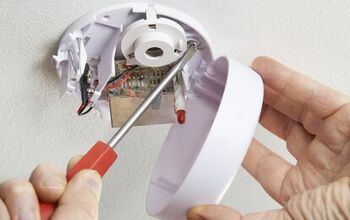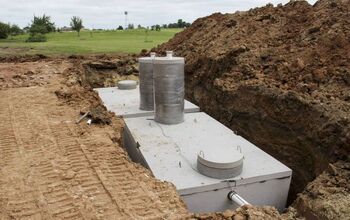110V Vs. 120V: What Is The Major Difference?

Many people refer to the voltage at the electrical outlets as 110 volts. Others routinely call these 120-volt outlets. If you plug almost any appliance into these plugs, the appliance works fine in either instance. Do some power companies deliver 110 volts and others 120 volts? What is the real story about 110V vs. 120V?
In the United States, there is no difference between a 110-volt outlet and a 120-volt outlet. The standard followed by power companies is to deliver electrical service to homes at 120 volts plus or minus a ten percent variance. Appliances in the US market are designed to operate within these variances.
The voltage supplied to your home’s electrical outlets is only part of the story. There are several other components of your electrical service that you must understand. Many of us take the quality and dependability of the electrical service we enjoy in the United States for granted. Read on for a deeper grasp of our electrical service’s historical and technical side.
A Quick History of Our Electrical Grid
In the 1880s, the electrification of the US was just beginning. Thomas Edison introduced an early electrical grid system based on direct current generation and electrical transmission. These direct current systems had a major problem. DC current is hard to transmit over wires for very long distances. In Edison’s early designs, the electrical grid required a power generation station almost every.
Enter Nikola Tesla and George Westinghouse
With the help of George Westinghouse, Nikola Tesla pioneered the use of alternation current to deliver power to homes and businesses. The war of currents had begun. Alternating current gained the advantage over DC. AC current voltages can be easily stepped up and down. This makes transmission of huge amounts of electricity over long distances possible.
The Growth of the Electric Grid
The national electrical grids that we enjoy today are direct descendants of the systems Tesla and Westinghouse pioneered. Over the course of time, power generation stations in the US delivered various voltages to homes and businesses. Since the prevalent usage was to provide light, the difference in voltages across the landscape wasn’t much of a problem.
As the availability of electrical appliances began to grow, it because apparent that this range of voltages was a problem. Eventually, as the grids grew and electrical usage in homes and businesses expanded, standardization across the grid became the norm.
110 volts or 120 volts?
At the user end of the grid, the difference between 100 volts and 120 volts is so minute that they are unnoticeable by the end-user. Eventually, a national standard for electrical service delivery was adopted. Today, across the US, it is accepted that you receive electrical service of 120 volts plus or minus ten percent.
Many older people still refer to their electrical service as 100 volts. In truth, the electrical service delivered to your home is usually rated at 120 volts or 240 volts. There may be differences in the amperages available, and these differences should not be ignored.
Volts, Amperage, and Ohms
To fully understand the power delivered to your home, you should understand the terminology. Voltage (volts), amperage, and ohms are the three terms most often used when describing electrical service. To help grasp the relationship of these terms, an often-used analogy is the best tool.
Voltage – The Potential to Do Work
The voltage of the electricity supplied to your home is simply a measure of the electrical energy’s ability to do work. We often refer to this as potential energy. Until the electrical voltage is applied to a device that provides some work, such as a light bulb or a microwave, the electricity can work.
Imagine a water pipe ready to deliver water to a water wheel. Voltage is akin to the water in the pipe that is not flowing. The potential for the water to turn the water wheel is there. Until the water flows and turns the water wheel, no real work is done.
Amperage – Capacity of Work Available
Amperage measures the strength of the electrical flow or the amount of work a given electrical service can perform. The more work required, the higher the amperage to perform that work. Amperage is usually independent of the voltage. Typically, electrical service provided to homes in the US is rated at 100, 200, or 400 amps.
To grasp the concept of amperage, consider our water wheel and water pipe again. Pressure in the water pipe is analogous to the amperage in your electrical system. If the pressure in the water pipe is too low, the water will not turn the water wheel. If you try to supply a microwave oven with electrical service without enough amps, the microwave will not work.
Ohms – The Resistance to Work
Nothing comes without a cost. Delivering electrical service to the blender on your kitchen counter is no different. Getting the electricity to flow through the wires encounters resistance to the flow. This resistance is measured in ohms.
In our water system, the size of the pipe carrying the water to our waterwheel is much the same as electrical resistance. If the pipe is too small, no matter how much pressure you apply to the water, you cannot get enough water to flow to the water wheel. Increasing the pipe size is like reducing the resistance in an electrical system by using large wires.
Putting Volts, Amperes and Ohms Together
Putting these three concepts together gives a clearer picture of your electrical system service. The key to bringing these three terms together is a fourth concept referred to as the watt. Watts are measures of energy expended to perform work. There are deep, technologically based explanations, but for our purposes, accept that one watt of power is generated when one ampere flows with one volt.
On paper, this is visually very simple. Consider the following equation.
Watts =Voltage times Amperage ( )
As an example, the branch electrical circuits in your home are usually rated at 15 amps. Your electrical service delivers 120 volts to your home through the mains. This gives us the result as shown below.
To fully grasp this result, we need to understand how those 1,800 watts translates to actual work. Most home electrical systems are designed to work at 80 percent of the rated capacity, so your 120 volts 15-amp branch circuit could theoretically supply fourteen 100-watt light bulbs.
The Difference in Outlets
Electrical outlets may differ depending on the amperage of the branch circuit. Standard 15-amp outlets have two vertical openings and a third oval outlet below the vertical slots. Typically, one of the vertical slits is slightly larger than the other. The plug on most appliances has a larger prong. This feature ensures that the polarity of the circuit is correct.
Twenty-amp branch circuits may have a T-shaped slot. Appliances that require a twenty-amp circuit have a corresponding T-shaped prong on the plug. This prevents the appliance from being used on a fifteen-amp circuit. Plugging a 20-amp appliance into a 15-amp circuit may damage the appliance and cause the breaker to trip.
The 240 Volt Part of the Puzzle
Along with your 120-volt service, most homes in the US also have the ability for 240 volts service. Many larger appliances such as cookstoves and HVAC systems require 240 volts. The mains service feeding your home has two 120 volts service lines. The required 240 volts for these larger appliances can be supplied by using the two 120 volts legs of the electrical service together.
In most instances, a 240-volt branch circuit will be rated for 30-amps rather than the 15 or 20 amp supplied to most branch circuits. This allows larger, more powerful appliances and equipment to be operated safely.
These 240-volt branch circuits almost always serve a single outlet, such as found behind an electric range. These are specialized outlets with different configurations to prevent you from accidentally plugging a 120-volt appliance into the circuit.
So, Which Is It 110 volts or 120 volts?
The US standard across the electrical grids is to supply 120 volts at 60hz. However, by the time the electricity reaches your home, there can be variances due to resistance and other issues in the delivery system. This is normal, and the variances are expected.
When describing your electrical service, the proper terminology is to adopt the standard voltage. In this case, the electrical outlets in your home are 120 volts. Depending on their location and expected use, the branch circuits that feed these outlets may be fifteen- or twenty-amp circuits.
If you measure the electrical voltages at the outlets in your home, your readings may vary between 110 and 130 volts. In most instances, the readings are slightly less than 120 volts. The average reading of the outlets in my home is 117 volts.
Don’t Get Confused
Don’t get confused by the terminology. In the United States, the standard across the electrical grid is 120-volts. You can be assured that the voltages delivered to the branch circuits in your home meet the specifications. The US enjoys one of the most reliable and consistent electrical grid systems globally.

Dennis is a retired firefighter with an extensive background in construction, home improvement, and remodeling. He worked in the trades part-time while serving as an active firefighter. On his retirement, he started a remodeling and home repair business, which he ran for several years.
More by Dennis Howard










![How Much Weight Can a 4×4 Support Horizontally? [It Depends!]](https://cdn-fastly.upgradedhome.com/media/2023/07/31/9070333/how-much-weight-can-a-44-support-horizontally-it-depends.jpg?size=350x220)

![The 5 Best Angle Grinders – [2022 Reviews & Buyer's Guide]](https://cdn-fastly.upgradedhome.com/media/2023/07/31/9071326/the-5-best-angle-grinders-2022-reviews-buyer-s-guide.jpg?size=350x220)














